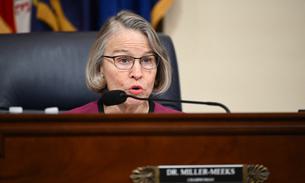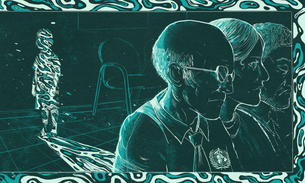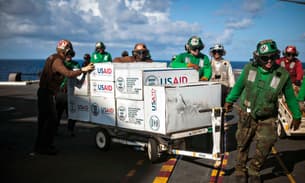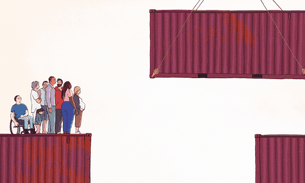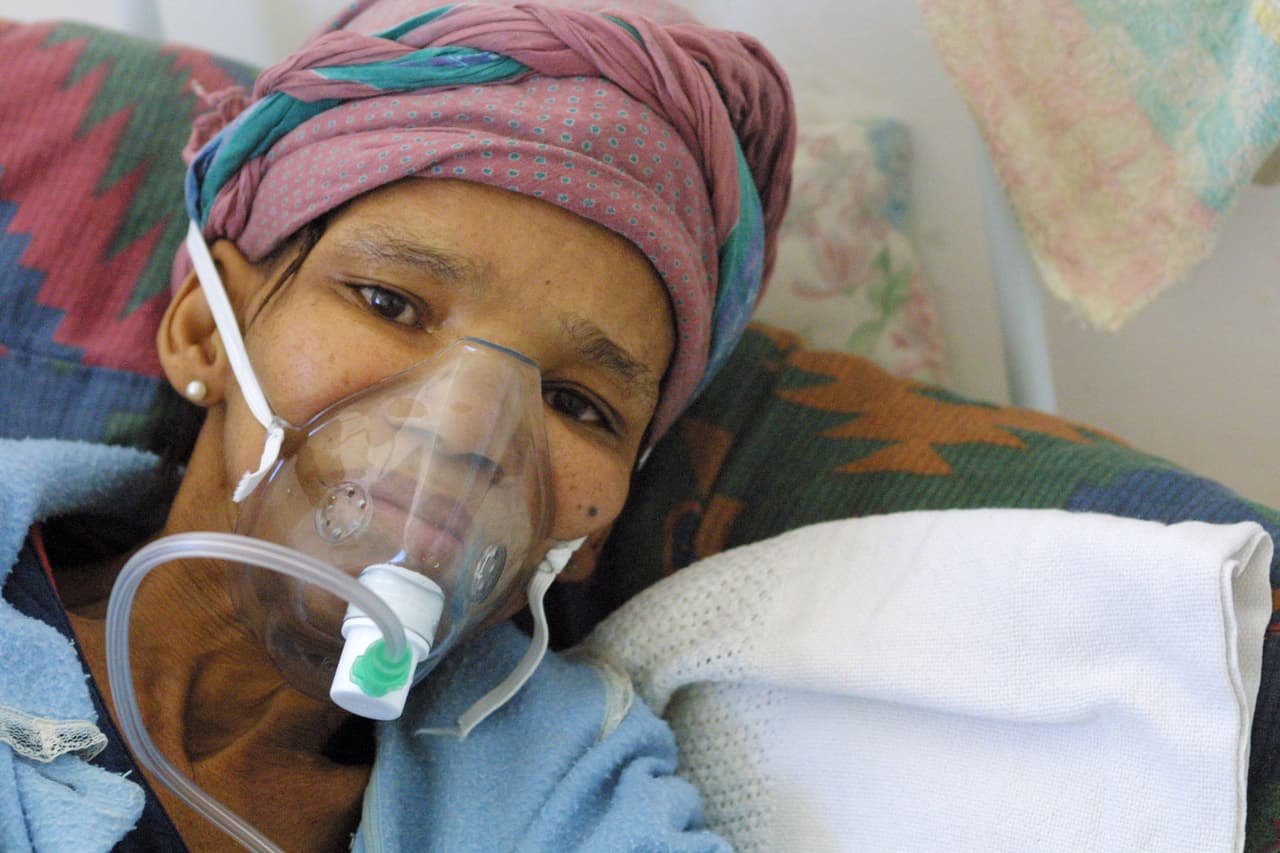
Oxygen giant spreads misinformation in Namibia
Hospitals were wrongly told that switching to onsite generator plants could ‘put human life at risk’
One of the world’s biggest industrial gas companies spread misinformation in an attempt to stop Namibian hospitals from switching to more reliable oxygen supplies as they fought a deadly third wave of coronavirus, the Bureau can reveal.
Afrox, the country’s main supplier, wrongly told private hospitals planning to build onsite oxygen plants that the gas the plants produced was not safe for use on patients.
Doctors told the Bureau that the 93% oxygen generated by onsite plants is as safe as the 99.95% liquid oxygen made by Afrox. Leith Greenslade, a coordinator of the Every Breath Counts Coalition, which advocates for medical oxygen access worldwide, said the World Health Organization and medical experts “could not be clearer on this”.
“No company should be seeking to restrict access to medical oxygen for any hospital,” she said. “Every national government has to take a good look inside its borders, and if this is happening, stamp it out.”
Last month, the Bureau revealed similar scare tactics had been used by Mexico’s two biggest medical oxygen suppliers.
Short of breath
Healthcare systems worldwide have struggled to keep pace with the soaring need for the medical oxygen vital to treating critically unwell Covid-19 patients. Across Africa, demand more than tripled in the past year, but the continent has the second-lowest production capacity for liquid oxygen globally.
In Namibia, Lady Pohamba Private Hospital in the capital Windhoek and Ongwediva Medipark hospital in the country’s north decided to invest in onsite oxygen plants to plug the gaps after being hit by high costs and late deliveries from Afrox.
These plants are generators built on hospital grounds that turn ambient air into medical oxygen, and they can provide a more reliable and economic supply. But Afrox salespeople tried to deter the hospitals from building the plants, hospital managers told the Bureau.
Linde, Afrox’s parent company, did not address the allegations about its subsidiary in Namibia. It told the Bureau that its Covid-19 response teams had worked tirelessly to deliver medical oxygen during the global crisis.
Afrox has no plant in Namibia and imports liquid oxygen from South Africa. The company charges 510 Namibian dollars (£25) to refill a cylinder containing 1,400 litres of oxygen, enough to help a severely ill Covid patient breathe for about two hours. Hospitals must pay an extra 226 Namibian dollars for cylinder rental and cleaning fees. There is also the cost and time needed to transport the cylinders to and from Afrox’s depot in Windhoek. That journey covers more than 1,400km for Ongwediva Medipark.
As the need for oxygen increased, managers at Ongwediva Medipark realised it would be unwise to rely solely on cylinders from Afrox. “As the hospital expanded, the demand exceeded the set-up of using cylinders,” said Victoria Shikongo*, a manager at the hospital. “We decided it was not sufficient for the maternity ward and other wards needing oxygen services; the [onsite] plant was the way to go.”
Despite Afrox’s efforts to deter them, both Ongwediva Medipark and Lady Pohamba Private Hospital went ahead and installed the oxygen generator plants. “We did our own research and realised that Afrox wanted to hold on to the market. There was nothing wrong with onsite plants,” said Shikongo.
The experience of the two hospitals was not unique. According to an onsite oxygen plant manufacturer, Afrox had spread misinformation about the systems since their introduction in Namibia.
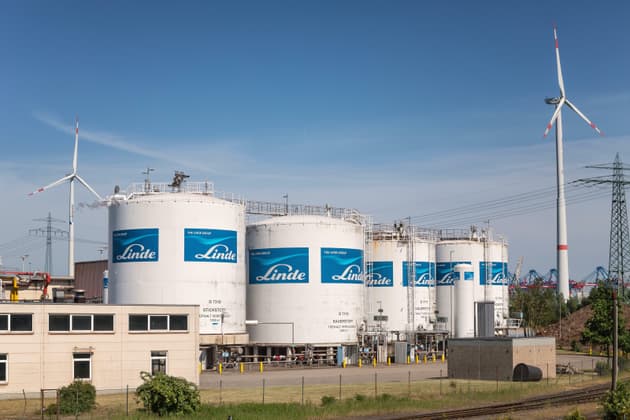 Linde made sales of £27bn in 2020
Canetti/Alamy Stock Photo
Linde made sales of £27bn in 2020
Canetti/Alamy Stock Photo
Petrus Johannes*, who distributes plants to mostly private hospitals in the country, told the Bureau that all but one of his 13 clients in the past six years had been lobbied by Afrox representatives falsely claiming oxygen from onsite generators is not safe for patients.
Johannes said Afrox’s use of the tactic was widespread. “[Hospital managers] told me that when the plants were first installed, Linde put a lot of pressure on them seemingly because we were taking away a big part of the market – the bulk oxygen,” he said.
Afrox representatives persisted in visiting hospitals after oxygen plants were installed, according to the managers. “They were really putting a lot of pressure on them to think that [93%] oxygen purity was not acceptable. And it was not right,” Johannes said. “But these hospital directors had done all their homework and consulted and so forth. And by then, they were confident they had made the right choice.”
Ongoing issues
Last year, the Bureau revealed that representatives of Linde, which operates in more than 100 countries worldwide and owns Afrox and BOC, had spread the same misinformation about 93% oxygen in Kenya.
As the Covid-19 crisis unfolded, the World Bank and Global Fund released grants and loans to allow countries to upgrade their oxygen systems and buy onsite generator plants. The World Health Organization, Unicef and other agencies also sent countries hundreds of thousands of oxygen concentrators. These suitcase-sized machines turn ambient air into oxygen for patients at their bedside.
But in a meeting about acquiring concentrators for Kenya, the Kenya Healthcare Federation, whose oxygen division is led by BOC, appeared to have ruled out the oxygen these concentrators produce for use with Covid-19 patients. The organisation said only 99.95% concentrated oxygen – the type produced at BOC plants – should be used.
The Bureau revealed similar behaviour by Linde’s Mexican subsidiary Praxair last month. When hospitals built onsite plants, the company sent letters falsely claiming that oxygen from the generators could “put human life at risk”. A former Praxair employee claimed it had been common for representatives to tell hospitals that using anything other than oxygen produced at gas plants could kill their patients. Both Praxair and Linde declined to comment on the allegations.
Another company, Grupo Infra, which US multinational Air Products partly owns, adopted similar tactics. Infra sent letters to at least five hospitals with – or considering installing – onsite plants, claiming that the plants could cause pollution, fires, explosions and infections in patients. One hospital in Guanajuato was threatened with legal action and a financial penalty of more than 10,000,000 pesos (nearly £400,000).
Our investigations get to the truth. Find out what they’re hiding from you
Sign up to our newsletterIn response to the allegations, Grupo Infra said its actions were justified and told the Bureau it stands by everything it said in the letter. It added that the company has made “large donations to public hospitals and launched aid programmes giving free oxygen in various locations around the country” during the Covid-19 crisis.
Brook Baker, a professor of law at Northeastern University and a civil society representative advising the World Health Organization’s deployment of drugs and oxygen for Covid-19, said: “Linde’s 99.95% oxygen is no better therapeutically than self-generated 93% oxygen because both are diluted with air for patient use.”
In his opinion, “the only difference is that Linde can charge needlessly high prices for its proprietary oxygen, oxygen cylinders and delivery”. “It’s not surprising that companies with monopoly positions that allow them to charge high prices would disparage alternative products and cheaper sources of supplies.”
* Some names have been changed
Reporters: Madlen Davies and Tuyeimo Ivawa Haidula
Impact producer: Paul Eccles
Desk editor: Chrissie Giles
Global editor: James Ball
Investigations editor: Meirion Jones
Production editor: Emily Goddard
Fact checker: Alice Milliken
Legal team: Stephen Shotnes (Simons Muirhead Burton)
This article is part of our Global Health project, which has several funders, including the Bill & Melinda Gates Foundation. None of our funders have any influence over the Bureau’s editorial decisions or output.
Header image: A tuberculosis patient in Namibia receives oxygen therapy. Credit: Agencja Fotograficzna Caro/Alamy Stock Photo
-
Area:
-
Subject:



